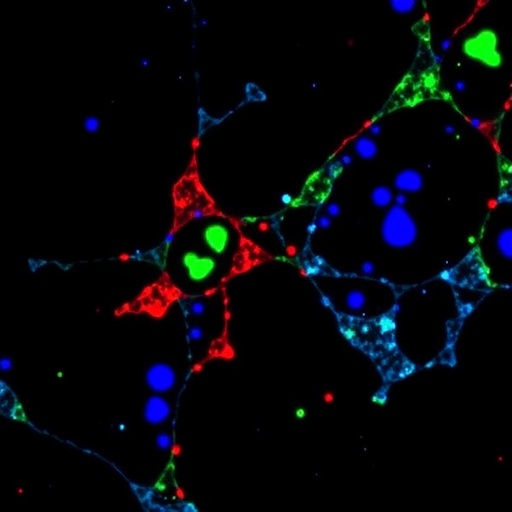Competition within mixed bacterial populations can give rise to complex growth dynamics. Researchers from Ludwig-Maximilians-Universitaet (LMU) in Munich are probing the interplay between differential growth rates and stochastic factors in determining the composition of such populations.
How do bacteria react to fluctuations in their environment? How do they respond to abiotic stresses or to competition with other microbes? And in mixed populations, what factors determine which of the competing species or strains win out in the end? These questions are not easy to answer, for bacterial communities represent complex and dynamic ecosystems. The impact of fluctuations in growth rates on bacterial cultures can be investigated on an abstract level with the aid of dynamical laws and probability theory, but the results must be verified by experiment. A team of biophysicists at LMU, led by Dr. Madeleine Opitz, has now used such a combination of experiment and mathematical theory to understand — on scales ranging from a few hundred cells to visible colonies consisting of billions of members — the changing composition of a mixed bacterial population whose constituent strains compete with each other. The results appear in the open-access journal PLOS Biology.
The study revealed that in the model system chosen by Opitz and colleagues the winning side becomes apparent at a very early stage in the growth of the population, when the numbers of cells are still relatively small. The researchers examined the growth dynamics in a mixed population made up of two strains of Escherichia coli. One of these can synthesize and release a toxin called ColicinE2, to which the second strain is sensitive.
With this information alone, it doesn't take much thought to work out which strain wins out. But the experimental system is rather more complicated. First, the number of toxin-sensitive cells in the starting population exceeds that of the toxin producers by a factor of 100. Secondly, not every potential producer actually synthesizes ColicinE2, and furthermore release of the toxin is accompanied by the death of the producing cell. Under these conditions, a clear division of labor arises within the producer strain. Some cells produce the toxin, while the rest take on the task of reproduction and proliferate. The fraction of cells that adopts each of these roles is in part determined by the nature of the environment. Toxin production is stimulated under stressful conditions, which the researchers imposed by adding different concentrations of an antibiotic to the culture. As Opitz explains, stress in the form of the antibiotic activates a specific type of SOS function in the bacteria, which triggers countermeasures and promotes toxin production (while the antibiotic also reduces overall growth rates).
In the absence of the stress induced by the addition of the antibiotic, the sensitive strain, which was present in 100-fold excess over the toxin producer at the outset, usually won out, although stable coexistence of both strains was also observed under these conditions. In cultures containing low levels of the antibiotic, on the other hand, the division of labor within the producer population gave it a decisive advantage, and in the vast majority of cases, it emerged as the victor.
Although the distribution of "responsibility" for reproduction and toxin production defines the range of outcomes available, the decisions made by individual members of the toxin-producing strain during the first few hours after inoculation of the culture determine the actual result of each competition. The "decision" of an individual bacterial cell to produce ColE2 is a random event. The mean outcome of a series of random events, just like the overall distribution of the results of a succession of dice throws, can be predicted. But the likelihood that any given cell will produce the toxin cannot be so easily assessed. These statistical fluctuations produce the background noise that makes it so difficult for mathematical models to provide clear predictions with respect to individual iterations of such probabilistic processes. This is underlined by the finding that the number of potentially toxin-producing cells (1 or 4) included – by chance — in the initial inoculum has an important impact on the outcome of the competition, says Opitz.
"It is fascinating to observe," remarks first author Benedikt von Bronk, how choices dictated by random events among the small numbers of bacteria present in the culture at the outset can have such an impact on the composition of a much larger population of cells at a much later time."
###
Media Contact
Luise Dirscherl
[email protected]
0049-892-180-3423
http://www.uni-muenchen.de
############
Story Source: Materials provided by Scienmag




